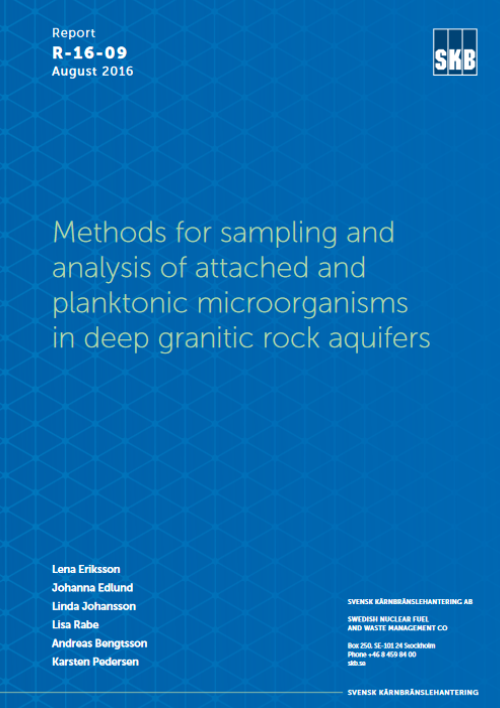Micans developes new sampling methods
The presence of active microbial populations in repository environments must consequently be addressed to facilitate safe implementation of geological disposal of SNF. It has repeatedly been show that subterranean microorganisms rapidly attach to mineral surfaces and that attached microorganisms are at least as metabolically active as are planktonic microorganisms. While there were well developed methods for the analysis of numbers and diversity of planktonic microorganisms in deep groundwater there were no methods for assaying numbers and diversity of attached microorganisms on aquifer fracture surfaces during the site investigations. New methods for sampling attached microorganisms had to be developed for determination of amount of biomass per surface area. The methodologies should also be applicable for determination of microbial diversity.
These newly developed methods by Micans can be read about in the new published report available here.

